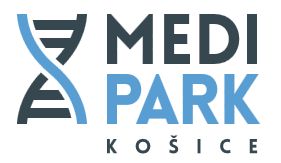What is the International Credit Mobility?
Key Action 171 or the International Credit Mobility (ICM) is an activity under the Erasmus+. Through ICM, a Higher Education Institution (HEI) in a Partner Country can send its students and/or staff to a partner HEI in a Programme Country and vice versa.
How to establish a partnership?
Step 1: Identifying cooperation possibilities, exchange of information
Please check our faculties, institutes or departments and their study programmes to see in which field(s) you would like to cooperate. To discuss the possibilities for cooperation, please contact:
- a staff member at the faculty, institute or department you wish to cooperate with (see the the list of our Erasmus+ coordinators), the head of the department, or some academic staff member you already know;
- the International Relations Office (and the IRO will forward your proposal to a responsible person at the faculty, institute or department).
If there is a mutual interest for cooperation, it is necessary to discuss with a responsible person at the faculty, institute or department:
- which study fields will be involved;
- which faculty(ies), institute(s) or department(s) on both sides will be included;
- what types of mobilities should be implemented (student mobility for studies – long-term mobility; student mobility for studies – short-term mobility of PhD students; student mobility for traineeships – long-term mobility; student mobility for traineeships – short-term mobility of PhD students; staff mobility for teaching; staff mobility for training). It is not necessary to plan all mobility types, but the priority should be given to student mobilities. No reciprocity is necessary;
- how many students and/or staff (incoming / outgoing) should be exchanged within the project duration;
- how long should each mobility last. A minimum duration of the activity is the following: student mobility for studies – long-term mobility: 2 months; student mobility for studies – short-term mobility of PhD students: 5 days; student mobility for traineeships – long-term mobility: 2 months; student mobility for traineeships – short-term mobility of PhD students: 5 days; staff mobility: 5 days (for staff mobilities and short term student mobilities, it is possible to give the individual support also for 1 day of travel before the activity and 1 day of travel after the activity);
- in case of student mobilities: what study cycles will be involved (Bachelor / Master / PhD), which courses will be available, what will be the language of instruction at each institution;
- in case of staff mobilities: what will be the language of teaching / training at each institution.
| Sending organisation can be… | Receiving organisation can be… | |
|---|---|---|
| Student mobility for studies (SMS) | Programme or Partner Country HEI | Programme or Partner Country HEI |
| Student mobility for traineeships (SMP) | Programme or Partner Country HEI | Programme or Partner Country HEI or Programme or Partner Country public or private organisation |
| Staff mobility for teaching (STA) | Programme or Partner Country HEI or Programme or Partner Country public or private organisation | Programme or Partner Country HEI |
| Staff mobility for training (STT) | Programme or Partner Country HEI | Programme or Partner Country HEI or Programme Country public or private organisation |
Then, we will need from our faculty(ies), institute(s) or department(s) to send to the International Relations Office a Proposal which will include the above-mentioned information and answers to 4 questions:
- the relevance of the planned mobilities: “Explain why the planned mobility project is relevant to the internationalisation strategy of the higher education institutions involved (both in the Programme and Partner Country). Justify the proposed type(s) of mobility (student studies, student traineeships, staff teaching or staff training).”
- the quality of cooperation agreements: „Detail your previous experience of similar projects with higher education institutions in this Partner Country.
- the quality of the project design: „Describe the different phases of the mobility project and provide a summary of how the partner organizations plan to carry out the selection of participants, the support they will provide before, during and after the mobility, and to recognize their mobility period (especially in the Partner Country). Please indicate the specific measures to ensure the participation of participants with fewer opportunities.”
- the impact and dissemination: „Explain the desired impact of the mobility project on participants, beneficiaries, partner organisations and at local, regional and national levels. Describe the measures which will be taken to disseminate the results of the mobility project at faculty and institution levels, and beyond where applicable, in both the Programme and Partner Countries.”
- We would like to also know your point of view, and therefore, it would be very helpful if you could cooperate with our faculty(ies), institute(s) or department(s) in answering these questions.
The Higher Educational Institution (HEI) in the Partner Country needs to have a valid Organizational ID (OID): https://webgate.ec.europa.eu/erasmus-esc/index/organisations/search-for-an-organisation. If you do not have one, you will need to get one before the implementation of the mobilities at the latest (Non-academic organisations do not need an OID).
If you already know that you are planning to send some students with fewer opportunities (physical, mental, health-related, economic, social etc. situation) that would prevent them from participating in a mobility activity unless extra financial support (i.e. support beyond normal financial support), please let us know, so we will apply for an additional financial support for students with fewer opportunities.
Step 2: Application process
Based on the Proposals received from our faculty(ies), institute(s) and department(s), the International Relations Office of our university will fill in the application on behalf of you and other partners we would like to cooperate with, and submit the application to our National Agency. We can submit only one application for ICM per Call for Proposals, which should contain information on all the mobility activities we intend to carry out with you and the other partners.
The deadline for submitting the application to our National Agency is in February (usually around mid-February) and therefore, we need to receive the Proposals in January at the latest (depending on our internal deadline for Proposals).
Step 3: Applications results
Once we have submitted the application to the National Agency, it will undergo an evaluation procedure. The results are known in summer. After receiving the results, we will know what regions (and thus also what countries and HEIs/partners) were approved, how much budget was approved for each region and what types of mobilities can be implemented.
The results will be then discussed with our faculties, institutes and departments involved to agree on the most optimal redistribution of the approved budget and mobilities.
The approved budget will be sent to the Pavol Jozef Šafárik University in Košice and the IRO will ensure the transfer of the grants (financial support) to the participants directly.
Step 4: Inter-institutional agreement (IIA)
If a cooperation with your institution is approved, we will inform you about the planned mobilities and the financial support for each mobility, we will create a draft of the inter-institutional agreement and send it to you for approval and signature. The IIA has to be duly signed prior selection of participants and implementation of mobilities.
Final Report and Dissemination of Project Results
At the end of the project, our university will submit the final report about the project to the National Agency. It would be very helpful if you, as our partner HEI, could send us a post-project evaluation, i.e. information about the results of the project at your institution, impact of the mobilities at your institution and your internationalization strategies, dissemination of the project at your institution etc.










